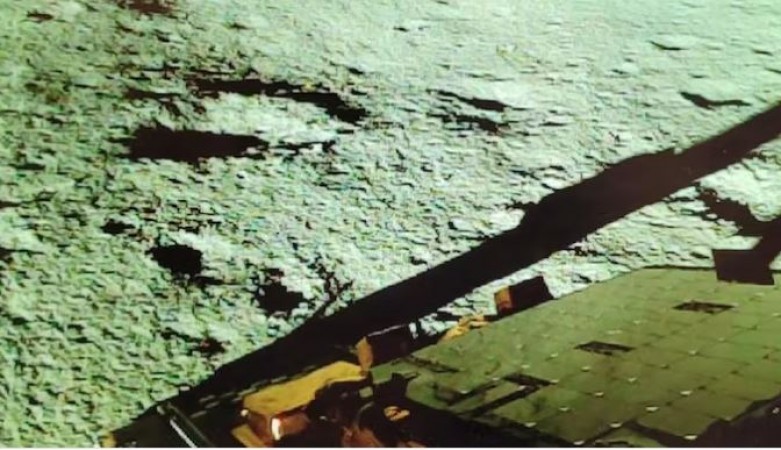
New Delhi: The Indian Space Research Organisation (ISRO) unveiled the initial dataset on Sunday (August 27) pertaining to the Moon's thermophysical attributes. This valuable dataset was garnered from the ChaSTE (Chandra’s Surface Thermophysical Experiment) payload, which is housed within the Vikram lander. ChaSTE, designed by a team led by the Space Physics Laboratory (SPL) at VSSC in conjunction with the Physical Research Laboratory (PRL) in Ahmedabad, focuses on comprehending the thermal conduct of the lunar surface. The instrument measures temperature profiles within the topsoil near the pole utilizing ten temperature sensors.
Chandrayaan-3 Mission:
— ISRO (@isro) August 27, 2023
Here are the first observations from the ChaSTE payload onboard Vikram Lander.
ChaSTE (Chandra's Surface Thermophysical Experiment) measures the temperature profile of the lunar topsoil around the pole, to understand the thermal behaviour of the moon's… pic.twitter.com/VZ1cjWHTnd
ISRO shared insights and a graphical representation of the findings. The organization stated, “ChaSTE (Chandra’s Surface Thermophysical Experiment) measures the temperature profile of the lunar topsoil around the pole, to understand the thermal behaviour of the moon’s surface. It has a temperature probe equipped with a controlled penetration mechanism capable of reaching a depth of 10 cm beneath the surface. The probe is fitted with 10 individual temperature sensors.” The provided graph depicts temperature variations on or near the lunar surface at different depths, showcasing extremes ranging from -10°C at a depth of 8 cm (-80 mm) beneath the surface to 60°C above the surface.
Based on ChaSTE's measurements, the lunar surface temperature registers at 50°C, escalating steeply to 60°C just 2 cm above the surface. This rise in temperature is attributed to the ongoing lunar day at the south pole, which corresponds to 14 Earth days, granting the region abundant sunlight. ISRO highlighted that this marks the first temperature profile of the lunar south pole, emphasizing that further comprehensive observations are currently in progress. Following a successful soft landing at the designated site, subsequently named ShivShakti Point, the lander and rover of the Chandrayaan-3 spacecraft have commenced in-situ experiments using all five ISRO payloads. The agency reassured that these components are performing as anticipated.
ISRO Chairman S Somanath confirmed that both the lander and rover are in optimal condition, and all five instruments have been activated. He affirmed that the comprehensive set of experiments will conclude by September 3rd, and the spacecraft will undergo varied testing modes to capture an unparalleled view of the Moon. Reports indicate that data from the propulsion module's payload has already begun transmitting to ground stations. Further updates on ISRO's lunar exploration are expected as the agency completes its preliminary data analysis.
In regard to the newly designated landing site names, ISRO's chief stated that Prime Minister Narendra Modi carefully selected "Shiv Shakti," an all-encompassing term. He added that PM Modi's choice of naming, which previously extended to the Chandrayaan-2 touchdown point named "Tiranga," reflects Indian identity. The chief underscored that these names are reflective of PM Modi's prerogative, as befitting his position in office.
AAP's Bihar Aspirations: Strengthening Base for 2025 Assembly Polls Shakes Up Political Arena
Uttar Pradesh Congress Eyes Priyanka Gandhi Vadra for Varanasi; Proposal to Challenge PM Modi
Government's Measures to Curb Rice Export Misclassification and Ensure Supply Availability